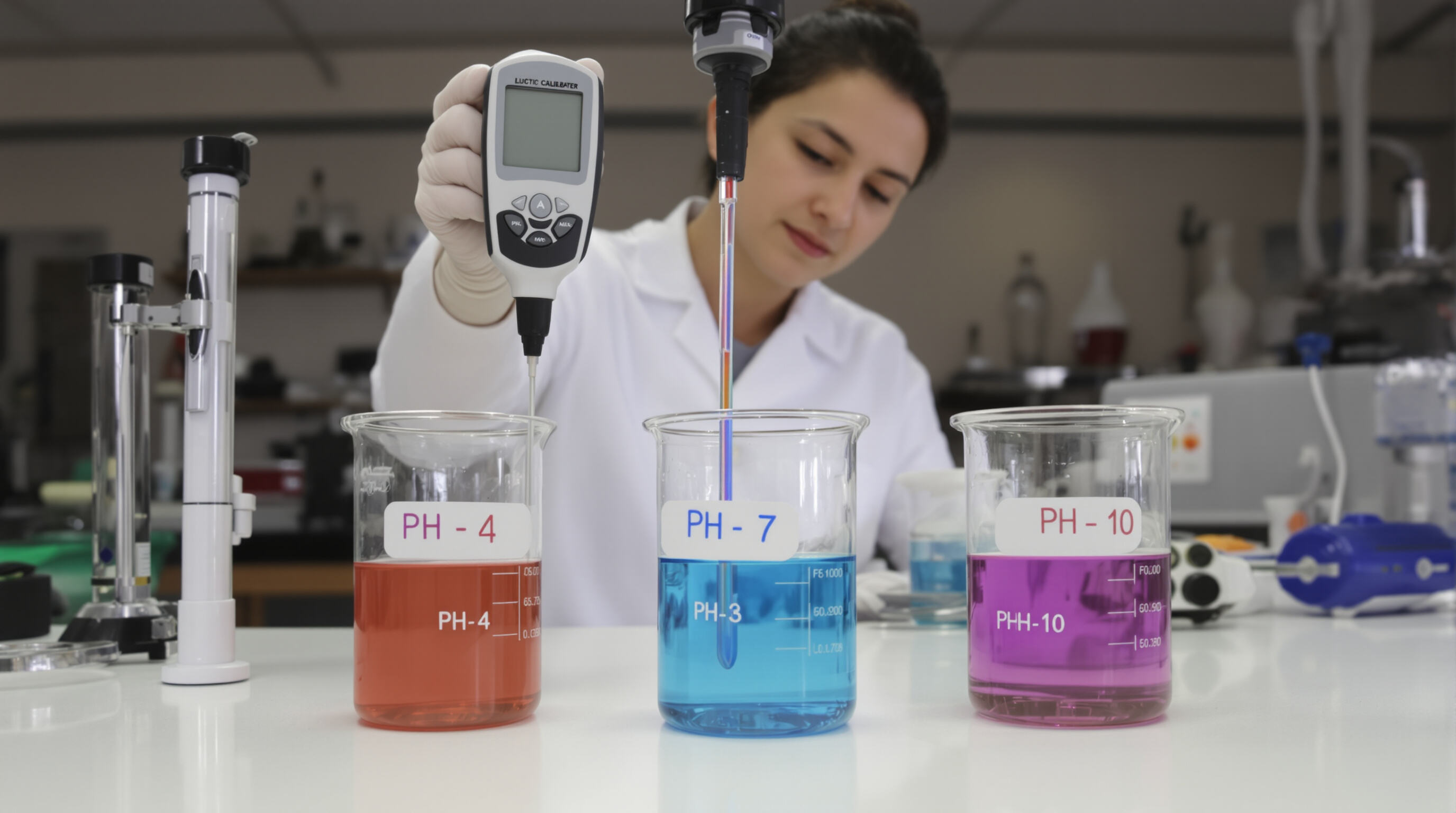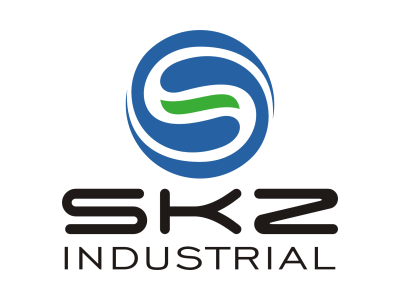Advanced Calibration Systems for Reliable pH Meter Accuracy

The Role of Buffer Solutions in pH Meter Calibration
Getting buffer solutions right is really important when calibrating pH meters because they give those stable reference points throughout the whole measurement range. Most industrial setups go with what's called three-point calibration at pH levels 4, 7, and 10 to account for how electrodes don't always respond in a straight line way. When folks mess up the calibration, they might end up with errors as big as plus or minus 0.5 pH units. That sounds small but trust me, in places like pharmaceutical manufacturing where quality control matters so much, these tiny mistakes add up. According to some research from Ponemon back in 2023, almost three quarters of all quality problems there actually come down to just this kind of measurement drift over time. And let's not forget temperature stuff either. These days most labs want their buffer temps no more than half a degree Celsius away from whatever fluid they're testing. Makes sense really since even slight differences can throw off readings completely.
Slope and Offset Verification in pH Sensors for Industrial Accuracy
Modern pH meters handle the math for us when it comes to figuring out electrode sensitivity (slope) and zero-point drift (offset) during their calibration routines. The industry standard ISO 17025 requires these devices to stay within a range of roughly 95 to 105% slope accuracy. When automated monitoring spots anything outside this window, especially if readings fall more than 3% off track, the system will flag it and suggest recalibrating before important tasks like adjusting pH levels in wastewater treatment plants. This kind of ahead-of-time checking cuts down on failed measurements quite significantly across ongoing manufacturing operations, though exact numbers vary depending on the facility and equipment age.
Calibration Frequency Based on Application Demands
| Industry | Calibration Interval | Failure Risk Reduction |
|---|---|---|
| Food Processing | 12 hours | 41% |
| Chemical Plants | 8 hours | 58% |
| Power Generation | 24 hours | 29% |
Electrodes degrade faster under high temperatures or abrasive conditions, necessitating more frequent calibration. One biotech facility cut sensor replacement costs by $180k annually by adopting dynamic calibration schedules based on real-time conductivity monitoring.
Best Practices for pH Sensor Calibration in Continuous Operations
- Use freshly opened buffer solutions weekly to avoid contamination
- Install automated rinse stations between calibration cycles
- Store electrodes in 3M KCl solution when idle for over 48 hours
- Conduct 5-minute stabilization checks after temperature shifts 10°C
Facilities following these best practices experience 89% fewer unplanned maintenance events than those using reactive approaches.
Case Study: Reducing Drift in Chemical Processing With Automated Calibration
A petrochemical plant integrated real-time calibration tracking with its SCADA system, eliminating pH-related catalyst waste. The platform:
- Detected 0.3 pH unit deviations during exothermic reactions
- Initiated mid-cycle recalibration without halting production
- Reduced manual labor by 420 hours/month
Post-implementation results showed 97% consistency in alkylation unit outputs, yielding $2.7M in annual savings from improved yield.
Durable Sensor Design for Harsh Industrial Environments
Robust Glass Membrane Design for Extreme pH Exposure
Industrial pH sensors rely on lithium-doped glass membranes engineered for stability across pH 0–14 and extreme temperatures. At 3mm thickness, these membranes resist hydrofluoric acid exposure common in metal plating. Field tests confirm they retain over 98% accuracy after 2,000 hours in 80°C sulfuric acid—critical for pulp and paper manufacturing.
Reference Electrolyte and Electrode Stability Under Pressure and Contamination
The double junction design in sealed electrodes keeps those nasty sulfides and heavy metals from contaminating readings in mining waste streams. When it comes to gel electrolytes containing silver/silver chloride components, they show remarkable stability too about 0.5% drift per year which makes them far better than their liquid counterparts when subjected to constant shaking on things like offshore drilling rigs. Most manufacturers these days equip their submersible pH sensors with IP68 and NEMA 4X ratings as standard practice. These ratings basically guarantee that the sensors can withstand whatever harsh conditions they might encounter underwater.
Clog-Resistant Diaphragms for Wastewater and Slurry Applications
Open junction diaphragms with PTFE shielding reduce clogging in high-solids environments, cutting maintenance frequency by 63% compared to ceramic models. A 2024 study showed hybrid ceramic/PTFE designs maintained flow rates above 1.5 mL/hour in sludge containing 12% total solids—three times better than conventional diaphragms.
Real-World Performance: Leading Manufacturer's Sensors in Mining Operations
During a 12-month copper leaching trial, advanced sensors maintained 94% measurement accuracy despite daily temperature swings (40–90°C), 5–7% sulfuric acid concentrations, and particulate loads exceeding 50g/L. These sensors required only three calibrations—60% fewer than previous models—saving $18k annually in maintenance.
Minimizing Drift and Ensuring Long-Term Measurement Reliability
Key Factors Affecting pH Meter Accuracy in Industrial Settings
Primary sources of pH drift include:
- Temperature fluctuations, causing ±0.03 pH/°C deviation in uncalibrated systems
- Chemical fouling, which can reduce electrode sensitivity by up to 40% within six months (2023 Process Instrumentation Report)
- Electrolyte depletion in reference junctions, responsible for 67% of drift in continuous operations
Shielded housings, automated cleaning cycles, and predictive maintenance help mitigate these risks.
Dual-Reference Electrode Systems to Reduce Measurement Drift
Tandem electrode systems cross-validate readings to isolate errors from contaminated fluids, degraded reference solutions, or asymmetric junction potentials. In a 12-month wastewater treatment trial, this redundancy reduced drift by 58% compared to single-electrode setups.
Long-Term Reliability Data From Food and Beverage Industry Deployments
A leading manufacturer's pH/ORP controllers achieved ±0.1 pH accuracy for over 14 months in dairy pasteurization—well beyond the industry average of six months. Performance highlights included:
| Parameter | Industry Standard | Field Performance |
|---|---|---|
| Calibration Interval | 30 days | 92 days |
| Electrode Lifetime | 9 months | 16 months |
| Drift Rate | 0.15 pH/month | 0.07 pH/month |
These outcomes demonstrate how advanced drift compensation extends service life while meeting FDA and EU hygiene requirements.
Precision Through Intelligent Temperature Compensation

Understanding the Effect of Temperature on pH Readings
Temperature plays a big role in pH measurements since reaction speeds go up around 7 to 9 percent for every degree Celsius increase according to research from the Journal of Electroanalytical Chemistry last year. When working with equipment such as reactor vessels or cooling systems in factories, small changes in heat can really mess with how electrodes react and what they measure against. Take food processing tanks for example where temperatures might swing by thirty degrees Celsius during operations. That kind of variation could throw off pH readings by almost half a unit which matters a lot when processes need accuracy down to plus or minus 0.05 on the scale. Getting those numbers right isn't just about science anymore it's about keeping production running smoothly without costly mistakes.
Automatic Temperature Compensation (ATC) in Modern pH/ORP Controllers
Modern controllers use ATC to counteract thermal drift via integrated thermistors and adaptive algorithms. According to a 2025 industry report, beverage manufacturers using ATC-equipped systems reduced measurement errors by 42% during rapid temperature shifts in fermentation. Key components include:
- Thermistors with ±0.1°C resolution
- Multi-point calibration across pH 0–14 and 0–100°C ranges
- Algorithms that adjust for electrode aging
Field Validation: Managing Temperature Swings in Bioreactor Environments
In pharmaceutical bioreactors experiencing ±5°C hourly fluctuations, ATC-enabled meters maintained less than 0.08 pH variance over 72-hour batches—35% more stable than uncompensated models. The technology excels in:
- Mammalian cell cultures (pH tolerance: ±0.1)
- Enzymatic reactions (37–55°C operating range)
- CIP/SIP cycles involving 10–80°C thermal shocks
Data from 12 facilities show ATC reduces calibration frequency by 28% in GMP environments while ensuring compliance with 21 CFR Part 11.
Integrated Multi-Parameter Monitoring for Smarter Process Control
Modern industrial pH meters increasingly combine pH, ORP, conductivity, and dissolved oxygen monitoring into unified platforms. This integration delivers comprehensive insights into interdependent water quality parameters, reducing reliance on multiple discrete sensors. In wastewater treatment, consolidated systems lower installation complexity by up to 40%.
Combining pH, ORP, Conductivity, and Dissolved Oxygen in One System
Shared data processing allows integrated arrays to correlate pH changes with ORP shifts—especially useful in chemical dosing control. ORP values validate disinfection efficacy, while conductivity sensors detect ionic interference that could compromise pH accuracy, a key concern in food processing (PTSA 2023).
How Multi-Parameter Capability Reduces Sensor Footprint and Operational Cost
Consolidated probes reduce maintenance costs by 25–35% through synchronized calibration and shared power supplies. A steel plant deploying multi-parameter sensors cut annual replacement expenses by $18,000 while maintaining ±0.02 pH accuracy across 14 production lines.
Case Study: Pharmaceutical Manufacturing With Smart pH/ORP Controllers
A European API manufacturer reduced batch rejection rates by 12% after implementing smart controllers with integrated pH/ORP monitoring. The system automatically initiates corrective actions when excipient mixing deviates from setpoints, demonstrating how multi-parameter intelligence enhances both accuracy and automation.
FAQ
How often should pH meters be calibrated in different industries?
Calibration frequency varies based on industry requirements. For example, food processing requires calibration every 12 hours, chemical plants every 8 hours, and power generation every 24 hours.
What is Automatic Temperature Compensation (ATC) in pH meters?
ATC counteracts thermal drift through integrated thermistors and algorithms, reducing measurement errors during rapid temperature shifts, crucial in environments like fermentation and bioreactors.
How does multi-parameter monitoring improve process control?
By integrating pH, ORP, conductivity, and dissolved oxygen monitoring, multi-parameter sensors provide comprehensive insights into water quality, reducing reliance on discrete sensors and lowering operational costs.
Table of Contents
-
Advanced Calibration Systems for Reliable pH Meter Accuracy
- The Role of Buffer Solutions in pH Meter Calibration
- Slope and Offset Verification in pH Sensors for Industrial Accuracy
- Calibration Frequency Based on Application Demands
- Best Practices for pH Sensor Calibration in Continuous Operations
- Case Study: Reducing Drift in Chemical Processing With Automated Calibration
- Durable Sensor Design for Harsh Industrial Environments
- Minimizing Drift and Ensuring Long-Term Measurement Reliability
- Precision Through Intelligent Temperature Compensation
- Integrated Multi-Parameter Monitoring for Smarter Process Control
- FAQ

